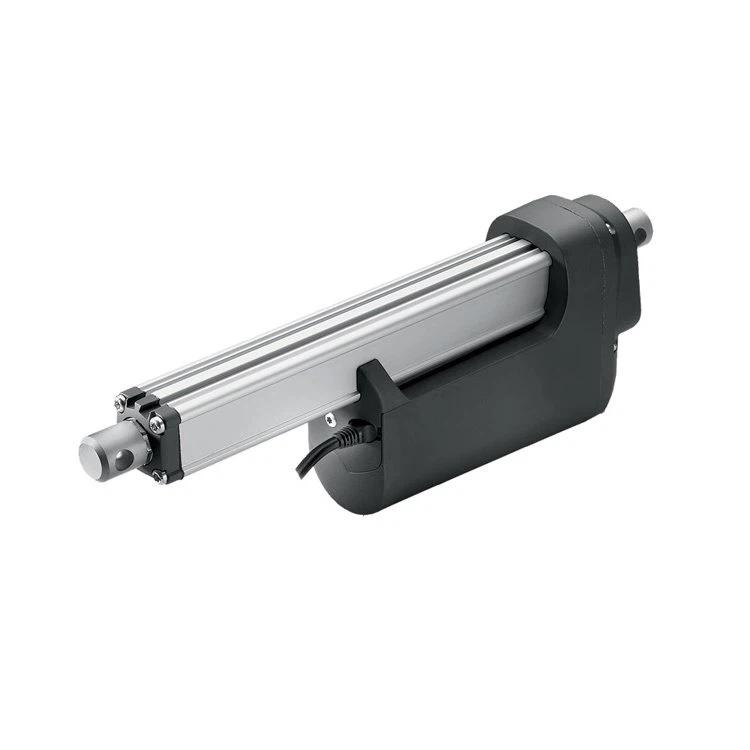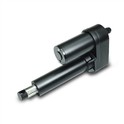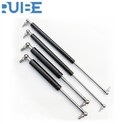Testing a linear actuator is a crucial step to ensure its optimal performance, reliability, and safety. As a linear actuator supplier, I understand the importance of comprehensive testing procedures. In this blog, I will share some effective ways to test a linear actuator to meet various application requirements.
1. Visual Inspection
Before conducting any electrical or mechanical tests, a thorough visual inspection is essential. This initial step can help identify obvious defects or damages that might affect the actuator's performance.
- External Components: Check the housing of the linear actuator for any cracks, dents, or signs of corrosion. A damaged housing can compromise the internal components and lead to premature failure. Inspect the mounting brackets, fasteners, and connectors to ensure they are securely attached and in good condition. Loose or damaged mounting parts can cause misalignment during operation, resulting in uneven movement and increased wear.
- Seals and Gaskets: Examine the seals and gaskets around the actuator to prevent dust, moisture, and other contaminants from entering. Damaged seals can allow foreign particles to infiltrate the actuator, causing damage to the internal mechanism and reducing its lifespan.
2. Electrical Testing
Electrical testing is vital to ensure that the linear actuator receives the correct power supply and functions as expected.
- Power Supply Check: Measure the voltage and current of the power supply connected to the actuator. Ensure that the power supply meets the actuator's specifications. An incorrect power supply can lead to overheating, reduced performance, or even permanent damage to the actuator. For example, if the actuator is designed to operate at 12V DC, a power supply with a significantly higher or lower voltage can cause problems.
- Motor Resistance: Use a multimeter to measure the resistance of the actuator's motor. Compare the measured resistance with the manufacturer's specifications. A significant deviation from the specified resistance may indicate a problem with the motor, such as a short circuit or an open circuit.
- Control Signals: If the linear actuator is controlled by a controller, test the control signals. Send different control commands to the actuator and observe its response. Make sure the actuator moves smoothly and accurately according to the control signals. For example, if the actuator is used in a Heavy Duty Linear Actuator application, it should be able to handle the control signals precisely to perform heavy - duty tasks.
3. Mechanical Testing
Mechanical testing focuses on the physical movement and performance of the linear actuator.
- Stroke Length Measurement: Measure the actual stroke length of the actuator. The stroke length is the distance the actuator can extend and retract. Compare the measured stroke length with the specified value. A deviation in the stroke length can affect the actuator's ability to perform its intended function. For example, in a Linear Actuator for Door Opener application, an incorrect stroke length may prevent the door from opening or closing properly.
- Speed and Force Testing: Use appropriate testing equipment to measure the speed and force of the actuator. The speed of the actuator is an important factor, especially in applications where quick movement is required. The force output of the actuator should be sufficient to perform the intended task. For instance, in a Linear Actuator for Trunk Lid application, the actuator needs to generate enough force to lift the trunk lid smoothly.
- Backlash and Play: Check for backlash and play in the actuator's movement. Backlash refers to the amount of free movement or slack in the actuator's mechanism. Excessive backlash can cause inaccuracies in positioning and reduce the overall performance of the actuator.
4. Environmental Testing
In many real - world applications, linear actuators are exposed to various environmental conditions. Therefore, environmental testing is necessary to ensure the actuator can withstand these conditions.
- Temperature Testing: Subject the actuator to different temperature ranges to evaluate its performance. High temperatures can cause the actuator's components to expand, which may affect its movement and electrical properties. Low temperatures can make the lubricants in the actuator more viscous, reducing its efficiency. For example, in outdoor applications, the actuator may need to operate in extreme temperature conditions.
- Humidity and Moisture Testing: Test the actuator's resistance to humidity and moisture. Moisture can cause corrosion of the actuator's metal components and damage the electrical insulation. A waterproof or moisture - resistant actuator is required in applications where it is exposed to wet environments.
- Vibration and Shock Testing: Simulate vibration and shock conditions to test the actuator's durability. In some applications, such as in vehicles or industrial machinery, the actuator may be subjected to significant vibrations and shocks. The actuator should be able to maintain its performance and integrity under these conditions.
5. Long - Term Testing
Long - term testing is essential to assess the actuator's reliability and lifespan.
- Continuous Operation: Run the actuator continuously for an extended period to monitor its performance over time. This can help identify any potential issues that may arise due to wear and tear. During continuous operation, check for any changes in the actuator's speed, force, or other performance parameters.
- Cyclic Testing: Perform cyclic testing by repeatedly extending and retracting the actuator. This simulates the real - world usage of the actuator. Monitor the actuator for any signs of fatigue or failure during the cyclic testing.
6. Data Logging and Analysis
During the testing process, it is important to log all the test data, including voltage, current, speed, force, and temperature. Analyze the data to identify any trends or anomalies. This data can be used to improve the actuator's design, manufacturing process, and performance. For example, if the data shows that the actuator's temperature increases significantly during operation, it may indicate a problem with the motor's efficiency or the cooling system.


Conclusion
Testing a linear actuator is a comprehensive process that involves visual inspection, electrical testing, mechanical testing, environmental testing, long - term testing, and data analysis. By following these testing procedures, we can ensure that the linear actuators we supply meet the highest quality standards and perform reliably in various applications.
If you are interested in our linear actuators or have any questions about testing or application requirements, please feel free to contact us for a detailed discussion. We are committed to providing you with the best - suited linear actuator solutions for your specific needs.
References
- "Linear Actuator Handbook", published by an industry - leading organization.
- Technical documents provided by linear actuator manufacturers.
- Research papers on the performance testing of linear actuators.






